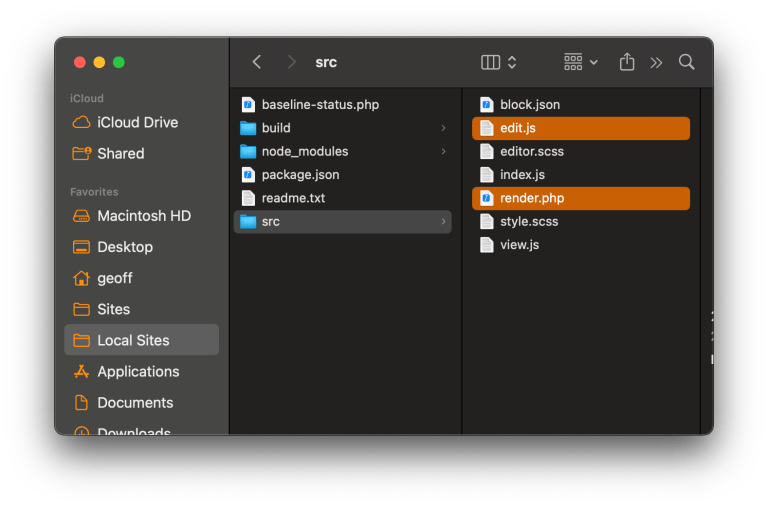October is coming to an end and this means that we hosted another SEO news webinar at Yoast HQ. If you’re not familiar with this recurring event yet: it’s a monthly webinar at which our experts Joost and Jono discuss the latest news when it comes to Google, Bing, WordPress and everything related to SEO. If you missed it, or if you simply want to reread the highlights, this post will give you a recap of the topics they covered. Sit back and enjoy!
What’s new in Google?
Google Search On 2020 event
This month, Google held an online Google Search On 2020 instead of their annual Google I/O that they had to cancel earlier this year. During the Search On event, Google announced that their language understanding model BERT is now used on almost every English search query out there.
To give you some context, BERT is designed to look at every part of a search query and understand the relationship between the different words being used. This ties in with Google’s continuous work to keep getting better and better at understanding the web and its users. By using AI, such as BERT, Google focuses more on getting you the right answer to your question and not just showing you the pages where you can find it yourself.
Google ranking pages or passages
Google seems to have made a switch from showing pages in the search results to showing specific passages that can answer a user’s search query. To give you an idea of what that looks like: in the search results they highlight relevant passages in a way that almost feels like a new type of snippet. This caused a bit of a stir, as people thought that this meant that Google will now start indexing passages instead of pages. But Google itself has confirmed that this is not the case, they consider passages an additional ranking factor.
What this means for you is that it becomes even more important to have a great content structure, where every one of your paragraphs has a clear focus and topic. And if you’re a big fan of using single-sentence paragraphs, now might be the time to reconsider using them. As they will be less likely to fit in with this type of content Google is looking for.
Taking search to the real world
Another cool development that feels like it’s part of a new revolution is that Google is taking steps to take their Search into the real world. With projects like Google Duplex, Busyness and AR in Google Maps they’re working on helping people find what they’re looking for while they are out and about.
Augmented reality in Google Maps, for example, can show you the way you need to go by projecting the directions onto the street through your phone instead of on a map on your phone. And Busyness can give you live information on how busy the restaurant is that you’re pointing your phone at that exact moment. All of this is rich information, and the next big step in moving Google out of the search box and into the real world. However, Google will have to monitor these new functionalities to prevent abuse by competing businesses. So, it will be interesting to see how this will pan out.
The Request Indexing Feature
In other news related to Google, they temporarily dropped the Request Indexing feature in Google Search Console. This means that, for the time being, you can’t submit an URL to get it indexed manually. We noticed that a few people are asking how they’ll get their pages indexed now that this feature is not available. But don’t worry, you don’t need this feature to get your site indexed. Your pages will get indexed when you link to them from other pages and trust us, this is really the best way to go. Submitting URLs to this feature in Google Search Console to get them indexed will not help your rankings as your pages simply need links to them and when you have these links to your page, this feature becomes redundant.
In addition, Joost and Jono discussed the launch of Journalist Studio, the new quality rater guidelines, the lawsuit against Google, the new version of Google Analytics, Web Stories becoming available in Discover, mobile-first indexing and Google Shopping that will soon be available for everyone.
What’s new in Bing?
Site Explorer
Bing also has lots of interesting news for us this month. So, let’s kick off with the launch of their new tool named Site Explorer. This tool shows you a tree structure of your site that’s actually quite useful. It allows you to review the structure of your site and your pages in a simple way and check where potential issues in your site’s structure might live. The simplicity of this is also why it’s important to look at this once in a while, as it shows you how their crawlers perceive your site. Because Bing’s crawlers work quite similar to Google’s crawlers, this gives you an insight into how both search engines perceive your site structure.
Microsoft Bing
Secondly, Bing has rebranded itself as Microsoft Bing. Although they’ve already rebranded a few times over the past year, this one feels like a step towards positioning Bing as an intricate part of the Microsoft ecosystem. This might be meant to show people using Windows that Bing powers or is related to everything else they use already. As they put it in their announcement blog: “you will see a shift in product to Microsoft Bing, which reflects the continued integration of our search experiences across the Microsoft family.”
An intelligent question-answering feature
Thirdly, Bing or Microsoft Bing, has released an intelligent question-answering feature to more than 100 languages. This feature feels a lot like what Google has been doing for a while, as it’s designed to give you an answer to your search query right away. In the search results. Nonetheless, this is still a cool feature that will help a lot of people with their online searches and it’s available in 100+ languages. So that’s kind of cool if you use Bing for your searches, but also if you’re a business that uses structured data as this will increase your visibility in Bing.
What’s new in Facebook?
This time, we even have a bit of Facebook news. And it’s about language. Normally, the way you would translate a language is by having a frame of reference and most of the time this is the English language. To give an example, if I want to translate the Dutch word ‘koffie’ to the Spanish word ‘café‘, most language learning systems would use the English language (and in this case the word ‘coffee’) as the neutral language to link all of the right translations to each other. Now Facebook has announced that they have an AI model that allows them to translate 100 languages without relying on this English data. This means that this translation can be done a lot faster as this middle step is no longer required and it gives them the possibility to scale the number of languages up relatively easy. Google has done something relatively similar a while back, but not to this scale.
What’s new in WordPress?
Twenty Twenty-One
We have some exciting news that we’re quite proud of when it comes to WordPress. At Yoast, we have a WordPress team dedicated to WordPress core and that team has been working on the new default WordPress theme Twenty Twenty-One! This theme will launch as the brand new default theme with the release of WordPress 5.6. In the last few weeks, we actually made our WordPress team a bit bigger to make s
ure that this theme gets the attention it deserves. If you want a sneak peek of what the theme looks like, you can check this out on Joost’s own blog.
WordPress 5.6
When it comes to the release of WordPress 5.6 itself, it’s worth mentioning that this new release brings lots of possibilities when it comes to the data you manage. With the possibility to manage passwords and security in the 5.6 release, WordPress takes another step in becoming a platform for so much more than blogging. It might need a bit of tweaking, but WordPress can now become a piece of software that helps you manage all kinds of different websites.
Cloudflare
Lastly, it’s also good to know that Cloudflare launched automatic platform optimization for WordPress. Now Cloudflare already does a lot of things to speed your site up, for example, by shrinking your images and optimizing your JavaScript. But this new feature is specifically created to increase the performance of WordPress sites. By caching your pages when you’re not logged in and closing security holes. We’ve already heard people reporting improvements such as 90% faster initial loading times and 60% smaller pages, and so on. Of course, these improvements are things you can do yourself, but Cloudflare can save you lots of time and effort by fixing these technical things for you.
What’s new in Yoast SEO?
SEMrush powered related keyphrases
We’ve had a few interesting releases ourselves, here at Yoast. First of all, we partnered up with SEMrush for our Yoast SEO 15.1 release. Together with this team, we’ve built an integration that helps you get related keyphrases straight in your editor. Not just any keyphrases, but related keyphrases that are powered by SEMrush data. With a free SEMrush account you can make up to 10 requests for these keyphrases a day. When you need more than that, you might have to look into getting a paid SEMrush account which gives you unlimited access to these related keyphrases. This feature is already proving its worth and we can’t wait to continue our partnership with SEMrush and think of other possibilities.
Enhanced Slack sharing
This week, we had our Yoast SEO 15.2 release that comes with a bunch of new features. Since this release, our plugin supports different word forms in Swedish, which means it will recognize different forms of the focus keyword (such as singular or plural). Plus this release launches our enhanced Slack sharing. This is really cool if you have a blog and use Slack, as our plugin will now show lots of different information when you share your link on Slack. Information such as the author and estimated reading time alongside your snippet and post image. This definitely brings a whole new experience to sharing your links on Slack!
The post The latest news in SEO and WordPress: October 2020 appeared first on Yoast.

